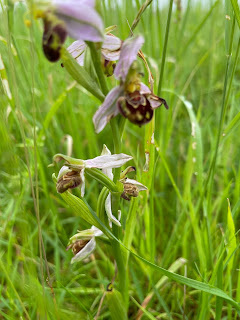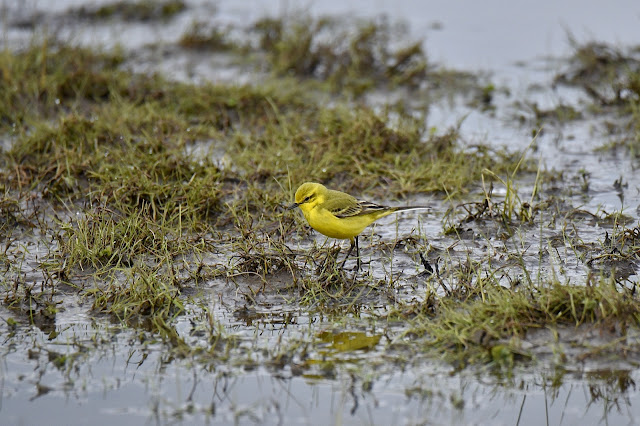There's not been anything of particular note for the rest of December to push me to doing another blog post and somehow things have drifted until the end of the year. The star Dotterel was belatedly reported once again on the 16th by a photographer and subsequently turned up at Otmoor so it's still very much around though not staying faithful to any one spot. The Golden Plover flock seems to have disappeared now so we're less likely to see it again on the Meadow for the time being.
The floods just about held together until finally we got a decent amount of rain which pushed them up to a larger size. We ideally need the river to flood at some point to ensure that they are nice and full for the spring passage. We finally started to get a bit of a gull roost towards the middle of the month with a few Yellow-legged Gulls and a 4w Caspian Gull (the latter courtesy of Thomas Miller). Towards the end of the year, the increased number of people on the Meadow meant that any roost was highly likely to be disturbed and the gulling was difficult.
 |
| The 4w Caspian Gull courtesy of Thomas Miller |
Regarding water fowl, apart from the usual species there was a Pintail one day that Mary MacDougall reported. At the end of the month the Otmoor Red-breasted Geese decided to change location and started to hang out with the Barnacle Geese on the Meadow. They make a most colourful addition to the goose population on the Meadow even if they are in all probability escapes.
 |
| The Red-breasted Geese courtesy of Joe Tobias |
In terms of waders, there was a female Ruff on a couple of occasions and a single Redshank was seen for a few days. Regarding other species, a heard-only Brambling flew over Wolvercote at dusk (per Nick Boyd) and a few Redpoll have been heard going over Burgess Field by Ollie Padget.
So that's the end of another birding year on the Meadow. My next post will the customary annual review but now it's time to scrub out the year list and start all over again!.


















































